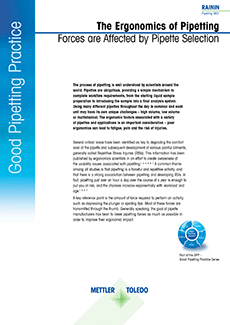 |
Liquidator 96 delivers both speed and high data quality to ELISA and other assays.
ELISA (enzyme-linked immunosorbent assay), is a common technique in modern biological research. It is used to detect and quantify distinct proteins in complex mixtures of proteins.
ELISA can be subdivided into two mechanisms. The first, qualitative ELISA, allows a researcher to understand whether a certain protein is present or absent within a sample of biological fluid. The second, quantitative ELISA, not only allows for the determination of a protein’s presence or absence, but also provides a concentration value for the protein within the sample.
In order to carry out quantitative ELISA, an accurate standard curve must be generated to determine protein concentrations in experimental samples. If the standard curve in quantitative ELISA is inaccurate, then the calculated concentrations of protein within experimental protein samples will be incorrect and conclusions from the ELISA experiment might also be incorrect.
Download Improving Quantitative ELISA Data white paper and begin increasing your throughput and data quality.








